Standing in a furniture store, wondering if that “wicker rattan chair” is redundant? You’re not alone. I’ve spent 15 years in furniture retail helping confused customers who use these terms interchangeably.
Here’s the truth: wicker and rattan are completely different things. Most people don’t know that one is a material while the other is a weaving technique.
This confusion costs shoppers money and leads to wrong furniture choices. This guide ends the wicker vs. rattan mystery with clear explanations you can understand.
You’ll find what each term means, why the confusion exists, and how to make smart furniture decisions.
I’ve tested both materials in real homes and helped thousands of customers choose correctly. These aren’t theories – they’re practical insights from hands-on experience.
Ready to finally understand the difference?
The Fundamental Difference Explained
Rattan is the material (like wood or metal) while wicker is the weaving technique used to create furniture, with rattan being the most popular material for wicker weaving.
1. Material vs. Technique Distinction

Here’s the simple truth: rattan is what it’s made of, wicker is how it’s made. Think of rattan as the raw material, like wood or metal.
Wicker is the weaving technique used to create furniture. When you see “wicker rattan weave,” it means rattan material woven using the wicker technique.
The confusion exists because people use both terms to describe the final product. You can have wicker furniture made from bamboo, reed, or willow, too. Rattan just happens to be the most popular material for wicker weaving.
Understanding this distinction helps you make better furniture choices and communicate clearly with salespeople who actually know the difference.
2. Common Misconceptions and Clarifications

People say “rattan and wicker” like they’re two different materials, but they’re not even in the same category. It’s like saying “cotton and sewing” – one is fabric, the other is technique.
This happens with brand names, too – we say “Kleenex” for all tissues. Marketing makes it worse by using both terms interchangeably to catch more searches online.
Casual conversation spreads the confusion when people don’t know the real difference. Understanding this matters when you’re spending money.
If you ask for “wicker furniture” without specifying the material, you might get bamboo when you wanted rattan. Knowing the difference helps you get exactly what you want and avoid expensive mistakes.
3. Practical Applications of the Difference
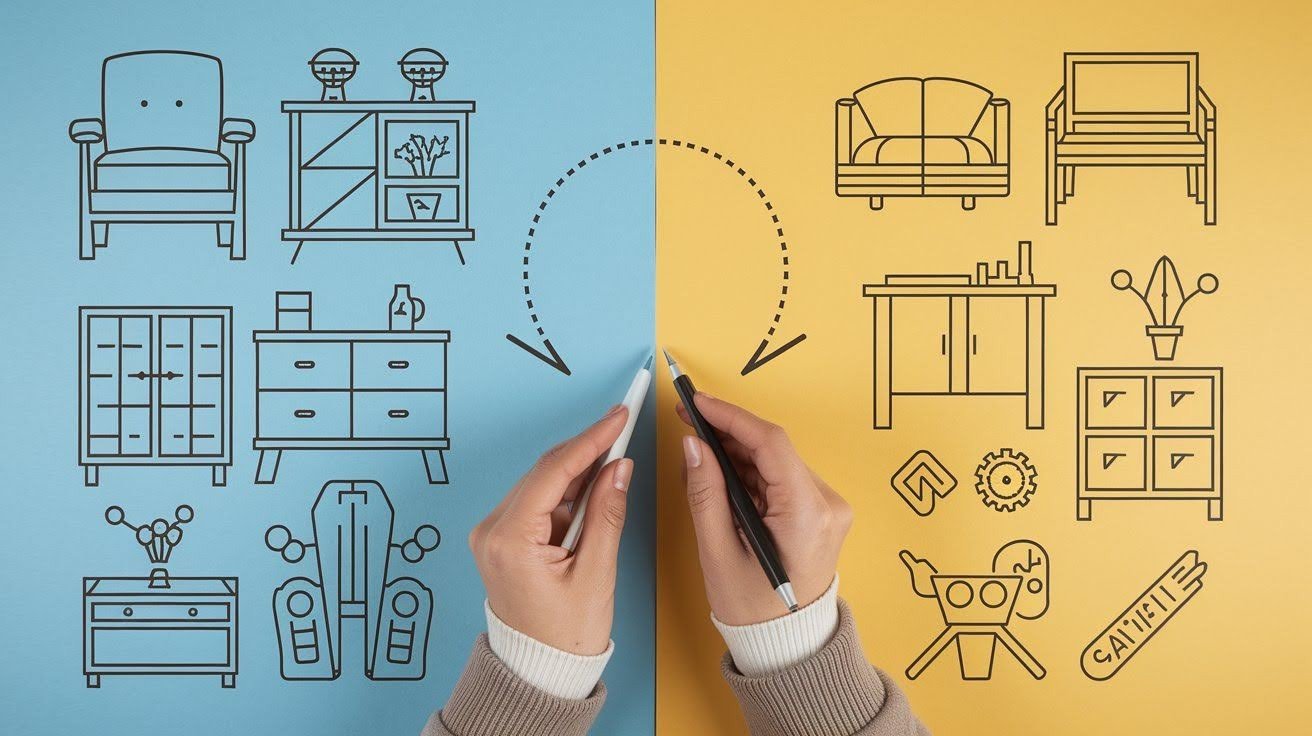
Understanding this difference changes how you shop for furniture completely. When you know rattan is the material, you can ask about quality – is it thick, flexible, or tightly woven?
The weaving technique affects durability, too. Tight wicker weaves last longer than loose ones, regardless of material. Pricing depends on both factors: rattan costs more than bamboo, and complex weaving costs more than simple patterns.
You can assess quality by examining both the material and the weaving. Look for consistent rattan thickness and tight, even wicker patterns.
This knowledge prevents salespeople from confusing you with fancy terms and helps you compare products accurately across different stores.
Natural vs. Synthetic Options
Natural wicker uses renewable plant materials like rattan and bamboo that excel indoors and offer environmentally friendly, biodegradable furniture options.
1. Natural Wicker Materials

Natural wicker uses plant-based materials woven into furniture and accessories. Rattan leads the pack, but bamboo, reed, and willow work too.
Each material brings different qualities – rattan is flexible and strong, bamboo is lightweight, and reed is affordable. Natural materials excel indoors where the weather can’t damage them.
They’re environmentally friendly since they’re renewable plant resources. The authentic look and feel can’t be replicated perfectly by synthetic alternatives. Natural materials develop character over time, with slight color changes and patina that many people love.
They’re also biodegradable at the end of their life, making them a responsible choice for environmentally conscious buyers.
2. Limitations of Natural Materials
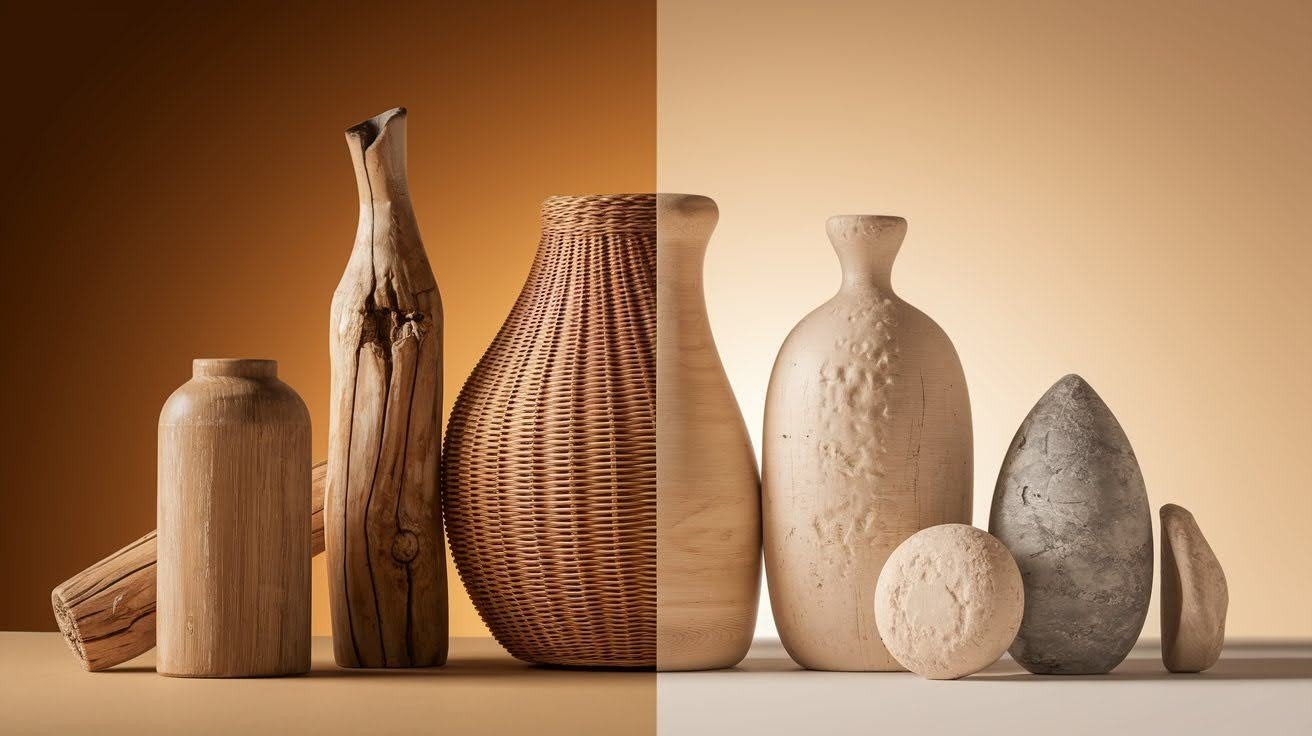
Natural materials struggle outdoors where the weather becomes their enemy. Heavy rain soaks into plant fibers, causing swelling and warping. Harsh sun fades colors and makes materials brittle over time.
Snow and freezing temperatures cause cracking and splitting. These organic materials decompose when exposed to moisture and temperature changes.
Maintenance becomes a constant battle – you need to clean, dry, and protect regularly. Repairs are difficult because damaged natural fibers don’t hold together well.
UV exposure breaks down the plant structure, making furniture unsafe to use. If you want outdoor furniture, natural materials will disappoint you and cost more money in replacements every few years.
3. Synthetic Resin Alternatives

All-weather wicker uses synthetic resins that mimic natural materials but perform much better outdoors. These resins come from plant matter but get processed into permanent, hardened materials.
The manufacturing process creates weatherproof furniture that handles rain, snow, and UV exposure without damage. Fade resistance keeps colors looking new for years instead of months with natural materials.
Modern techniques make synthetic wicker almost indistinguishable from natural versions in appearance. Quality synthetic options include warranties because manufacturers know they’ll last.
The resin construction maintains flexibility without the brittleness that develops in natural materials. You get the look you want with performance that works in outdoor environments.
Indoor vs. Outdoor Applications
Natural wicker excels indoors with stable climate control, gentle use, simple maintenance, lower upfront costs, and an authentic luxury appearance that works in any room.
1. Indoor Use Considerations
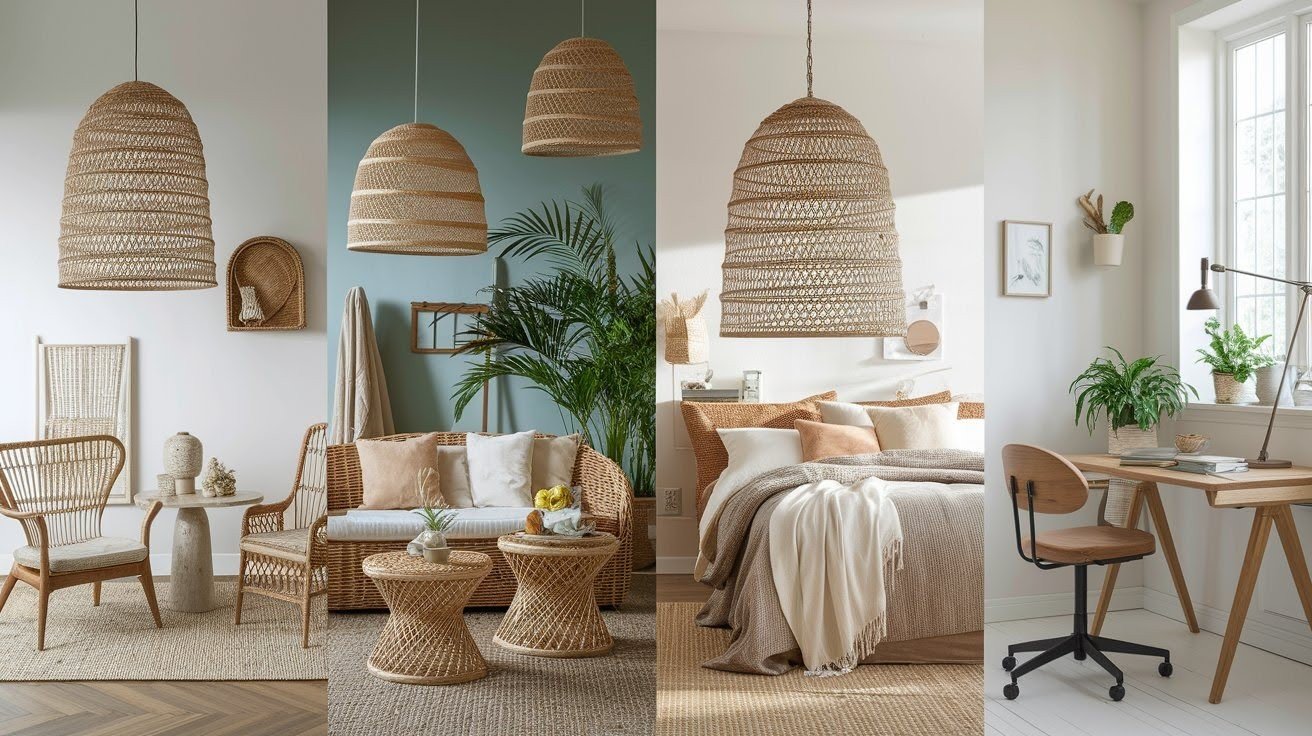
Natural wicker shines in protected indoor environments where the weather can’t cause damage.
Climate control keeps humidity and temperature stable, preventing the expansion and contraction that damages natural materials.
Indoor furniture gets gentler use – no storms, UV exposure, or temperature extremes. Maintenance becomes simple with occasional dusting and cleaning.
Natural materials cost less upfront since they don’t need weather protection. The authentic appearance and texture feel more luxurious than synthetic alternatives in living rooms and bedrooms.
Style versatility works in any room, from kitchens to sunrooms. You can move pieces around seasonally without worrying about weather exposure damaging your investment over time.
2. Outdoor Use Requirements
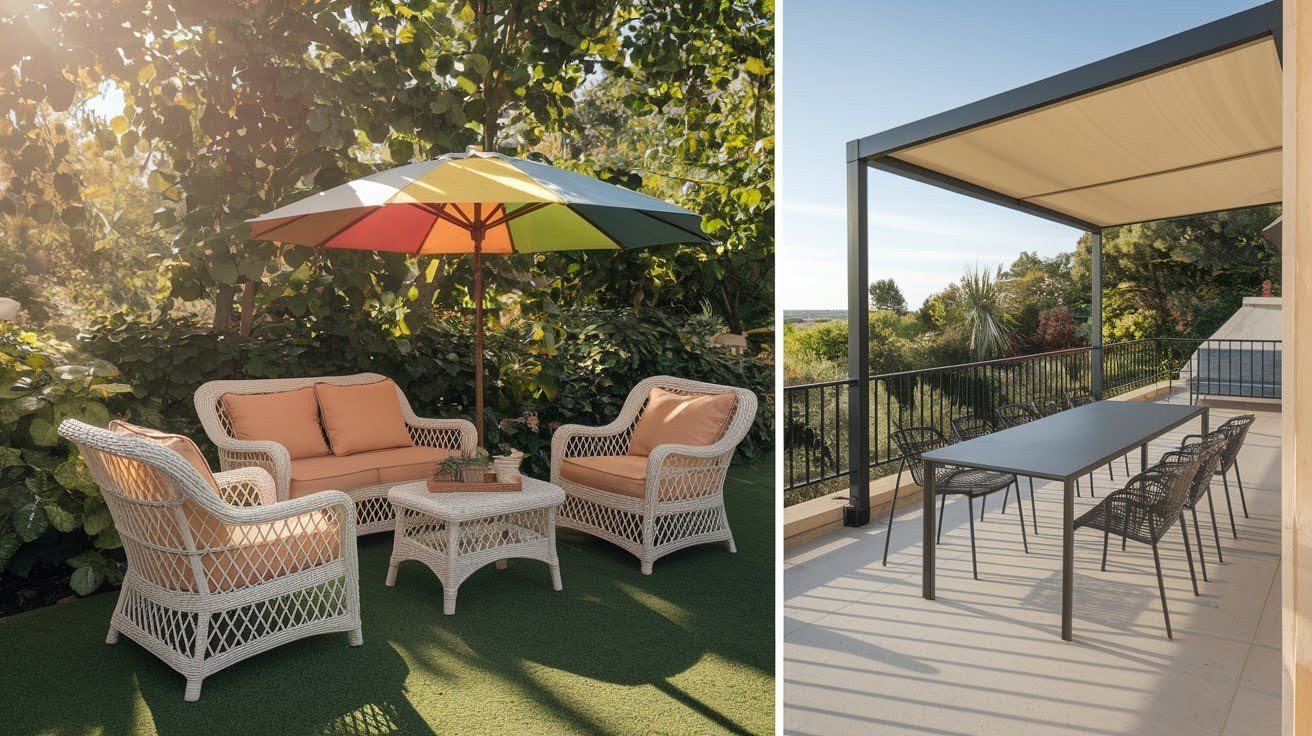
All-weather wicker dominates outdoor environments because it’s specifically designed for harsh conditions.
Protection against fading, rain, snow, and UV exposure keeps furniture functional and attractive for years. Durability comparisons show synthetic materials lasting 5-10 times longer than natural options outdoors.
Weather resistance means you can leave furniture outside year-round without constant covering and storage. Seasonal storage becomes optional rather than mandatory for furniture survival.
The initial higher cost pays off through longevity and reduced replacement frequency. Modern synthetic options include warranties that natural materials can’t match.
Quality outdoor wicker furniture maintains its appearance and structure through multiple seasons of heavy use and weather exposure.
3. Versatility and Multi-Environment Use
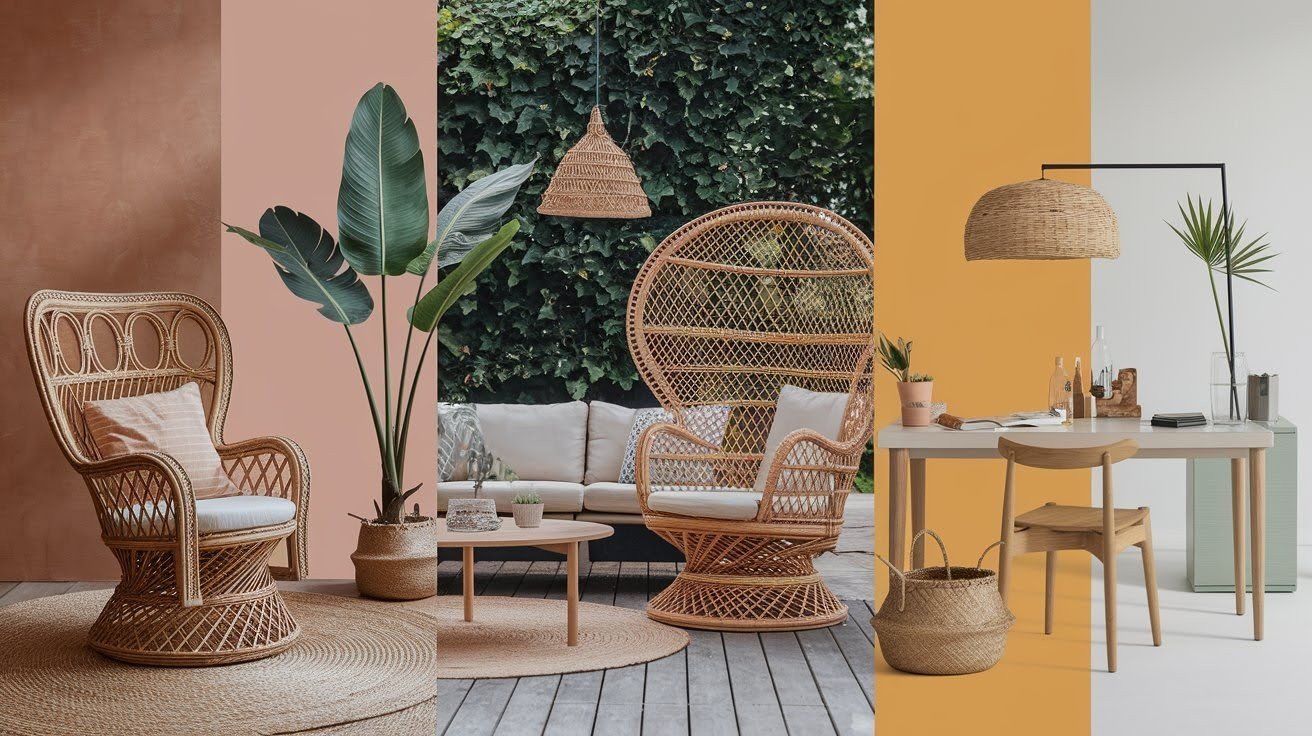
Rattan’s natural flexibility allows both indoor and outdoor use with proper care and maintenance. You can transition furniture seasonally from covered patios to enclosed sunrooms.
Design considerations include choosing pieces that complement both environments without looking out of place.
Maintenance requirements increase with mixed-use scenarios since outdoor exposure affects even covered furniture.
Investment value improves when furniture serves multiple purposes and locations throughout the year. Protection strategies become more important with regular environmental changes.
Quality rattan can handle occasional outdoor use but needs more care than dedicated outdoor synthetic materials. The versatility comes with trade-offs in durability and maintenance requirements compared to specialized indoor or outdoor options.
Durability and Maintenance Factors
Rattan maintenance requires simple cleaning with water and soap, protection from sunlight and moisture, and preventive care since repairs are limited and natural materials have inherent environmental vulnerabilities.
1. Natural Material Maintenance
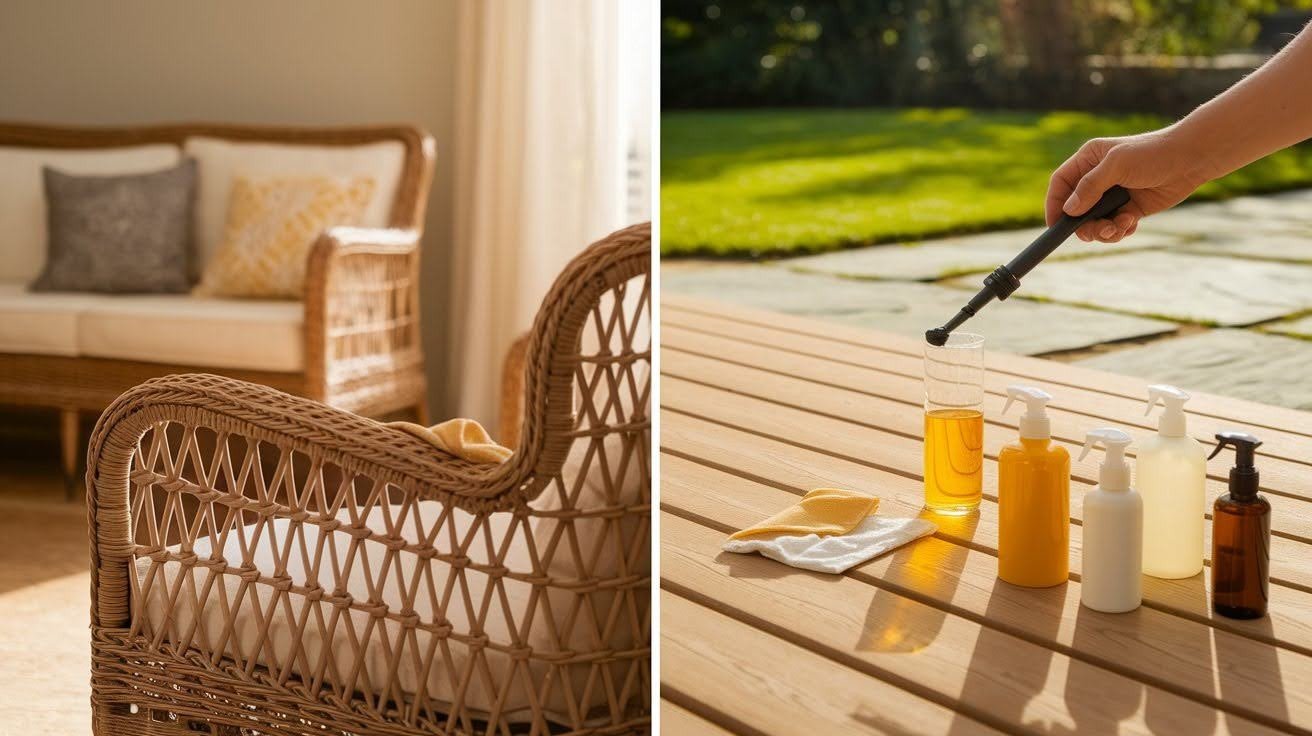
Cleaning rattan requires only a wash rag and water for regular maintenance. Simple care routines include weekly dusting and monthly deep cleaning with mild soap solutions.
Protection strategies involve keeping furniture away from direct sunlight and moisture sources. Common damage patterns include splitting, cracking, and color fading from UV exposure and humidity changes.
Prevention works better than repair – use furniture pads, avoid placing near heat sources, and maintain stable humidity. Repair possibilities are limited with natural materials since damaged fibers don’t bond well with patches or glue.
Regular maintenance extends life significantly, but natural materials have inherent limitations that maintenance can’t completely overcome in challenging environments.
2. Synthetic Material Advantages

All-weather wicker requires minimal maintenance compared to natural alternatives. Cleaning procedures involve vacuuming debris, brushing dirt away, and hosing down frames at the end of each season.
Seasonal care includes checking for loose weaving and tightening connections as needed. Moisture resistance means water runs off instead of soaking in, preventing the swelling and damage that affects natural materials.
Long-term durability expectations include 10-15-year lifespans with minimal maintenance requirements. Warranties often cover 3-5 years because manufacturers trust their products.
End-of-season maintenance takes minutes rather than hours compared to natural material care. The time and money savings add up significantly over the furniture’s lifetime, making synthetic options more economical despite higher upfront costs.
3. Longevity and Investment Considerations
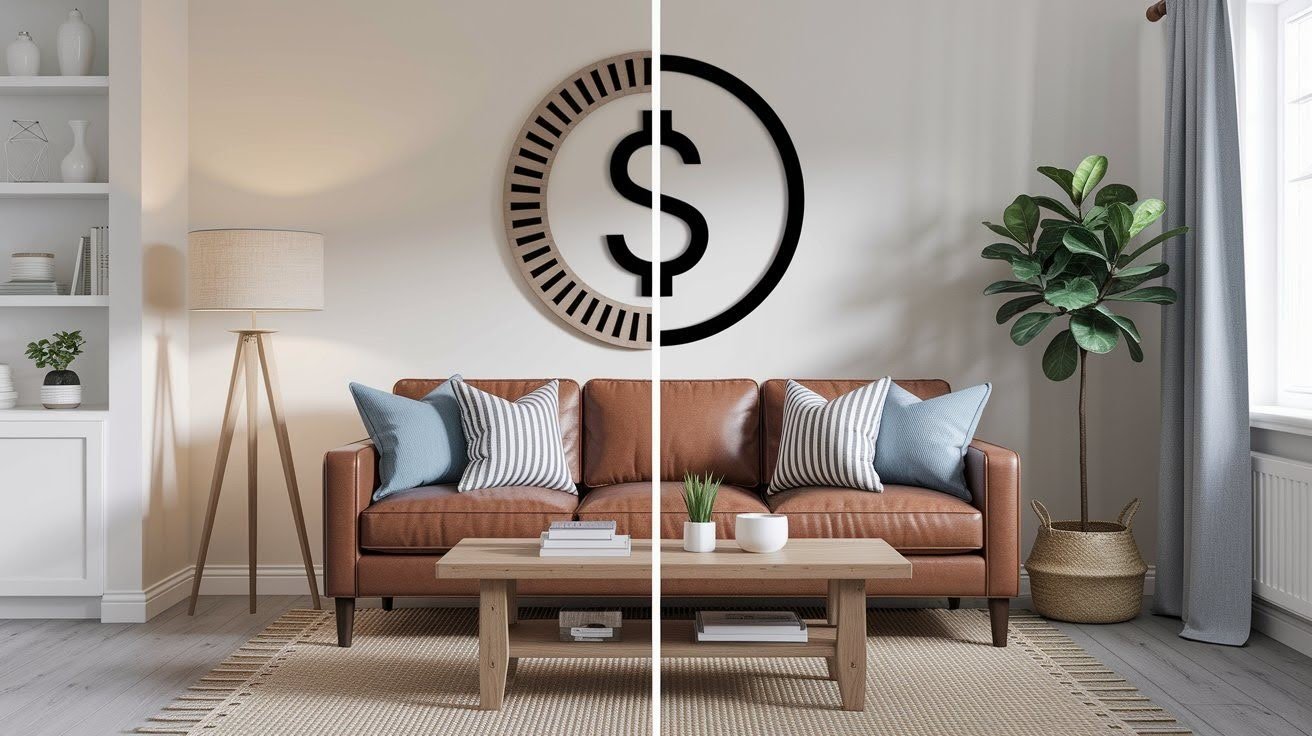
Lifespan comparisons show synthetic materials lasting 3-5 times longer than natural options in similar conditions. Cost-benefit analysis favors synthetic for outdoor use despite higher initial prices.
Replacement frequency drops dramatically – synthetic furniture might last 10-15 years, while natural materials need replacement every 3-5 years outdoors.
Quality indicators include tight weaving, UV-resistant materials, and solid frame construction regardless of material choice. Protection accessories like covers and storage solutions extend life for both material types.
Investment value depends on intended use – natural materials work well indoors while synthetic options excel outdoors.
Long-term value calculations should include maintenance time, replacement costs, and actual usable lifespan rather than just initial purchase price.
Conclusion
The difference between wicker and rattan is simpler than you thought: Rattan is the material, wicker is the weaving technique. No more confusion when shopping for furniture or talking with salespeople.
You now understand why synthetic options work better outdoors while natural materials excel indoors. Your furniture decisions will be smarter and save you money in the long run.
Whether you choose rattan woven in wicker style or synthetic all-weather alternatives, you can shop with confidence knowing exactly what you’re buying.
Have questions about specific furniture pieces or want to share your own wicker vs. rattan findings? Drop a comment below – we’d love to hear about your furniture adventures and help with any remaining confusion!
Frequently Asked Questions
What is the main difference between wicker and rattan?
Rattan is a material (a vine-like plant), while wicker is a weaving technique. You can have wicker furniture made from rattan, bamboo, reed, or synthetic materials. The confusion comes from people using both terms to describe the same furniture piece.
Can you use rattan and wicker furniture outdoors?
Natural rattan and wicker struggle outdoors due to weather damage, fading, and cracking. Synthetic all-weather wicker performs much better outside, resisting rain, UV rays, and temperature changes while maintaining appearance and durability for years.
Which is more expensive – rattan or wicker furniture?
Pricing depends on both the material and the weaving complexity. Natural rattan costs more than bamboo or reed, while intricate wicker weaving increases labor costs. Synthetic all-weather options have higher upfront costs but better long-term value.
How do you maintain rattan vs. wicker furniture?
Natural rattan needs regular cleaning with water and mild soap, protection from moisture, and UV exposure. Synthetic wicker requires minimal maintenance – just vacuuming debris and occasional hosing. Both benefit from seasonal storage or protective covers.
Is synthetic wicker as good as natural rattan for furniture?
For outdoor use, synthetic wicker outperforms natural rattan with superior weather resistance and longevity. Indoors, natural rattan offers an authentic appearance and environmental benefits. Choose based on intended use, maintenance preferences, and beautiful goals.

